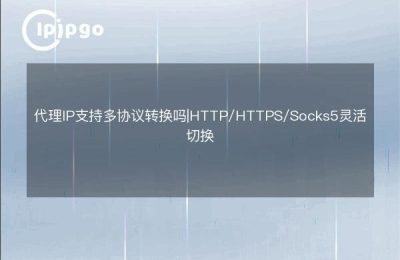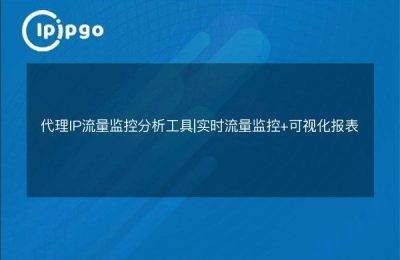
What is an IP Dynamic Proxy?
IP Dynamic Proxy (Internet Protocol Dynamic Proxy) is a network technology that hides the real network address through a proxy server, making access to a target website appear as if the request came from the proxy server. This technique is often used in scenarios such as accessing restricted websites, improving access speed, crawling web data, etc.
Choosing the right IP proxy service
Before configuring an IP dynamic proxy, you first need to choose a suitable IP proxy service provider. There are many companies in the market that provide IP proxy services when choosing one you need to consider the stability of the service, speed, price and other factors.
Get proxy IP address
Once you have chosen the right IP proxy service provider, the next step is to obtain the proxy IP address. A common way to do this is to obtain the IP address from the proxy service provider through an API interface. In Python, for example, you can use the requests library to call the API interface to get the proxy IP address:
ipipgothon
import requests
api_url = "https://api.luminati.io/v2/ips/whitelist"
headers = {
"Authorization": "Bearer YOUR_API_KEY"
}
response = requests.get(api_url, headers=headers)
data = response.json()
proxy_ip = data['ips'][0]['ip']
print("Proxy IP:", proxy_ip)
Configure Proxy IP
After getting the proxy IP address, the next step is to configure the proxy IP. when using Python to make network requests, you can specify the proxy IP address by setting the proxies parameter. Example:
ipipgothon
import requests
proxy = {
"http": "http://USERNAME:PASSWORD@PROXY_IP:PORT",
"https": "https://USERNAME:PASSWORD@PROXY_IP:PORT"
}
response = requests.get("https://www.example.com", proxies=proxy)
print(response.text)Here, USERNAME and PASSWORD are the authentication information for logging into the proxy server, and PROXY_IP and PORT are the IP address and port number of the proxy server.
Dynamic switching of proxy IPs
Sometimes it is necessary to dynamically switch proxy IPs to avoid being blocked or restricted from accessing the target website. A common practice is to use a proxy IP pool to get new proxy IP addresses from a proxy service provider at regular intervals and then randomly select an IP address to use. Here is a simple Python example:
ipipgothon
import requests
import random
import time
proxies = [
"http://USERNAME1:PASSWORD1@PROXY_IP1:PORT1",
"http://USERNAME2:PASSWORD2@PROXY_IP2:PORT2",
Add more proxies here
]
Add more proxies here ] while True: proxy = random.choice(proxies)
proxy = random.choice(proxies)
try: response = requests.get("", proxies)
response = requests.get("https://www.example.com", proxies={"http": proxy, "https": proxy})
print(response.text)
print(response.text)
except Exception as e.
print("Error:", e)
time.sleep(1)This enables dynamic switching of proxy IPs to improve the success rate of crawling data.
summarize
IP dynamic proxy can be effectively realized by obtaining a proxy IP address through a suitable IP proxy service provider and configuring it in the network request. In the process of using it, you can also combine it with proxy IP pool and other technologies to realize dynamic switching of proxy IPs and improve the access success rate. I hope this article can help you better utilize IP dynamic proxy.








